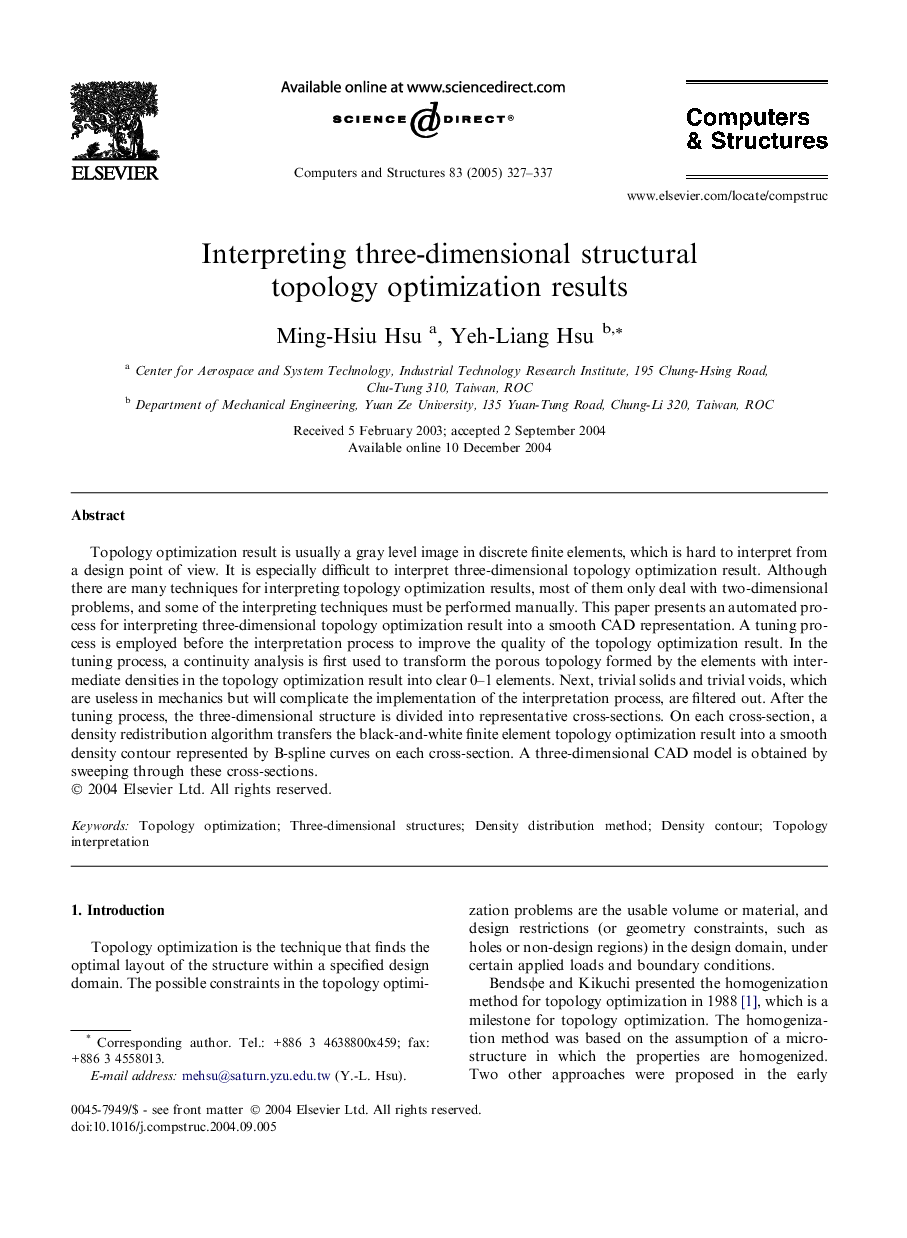| Article ID | Journal | Published Year | Pages | File Type |
|---|---|---|---|---|
| 9668253 | Computers & Structures | 2005 | 11 Pages |
Abstract
Topology optimization result is usually a gray level image in discrete finite elements, which is hard to interpret from a design point of view. It is especially difficult to interpret three-dimensional topology optimization result. Although there are many techniques for interpreting topology optimization results, most of them only deal with two-dimensional problems, and some of the interpreting techniques must be performed manually. This paper presents an automated process for interpreting three-dimensional topology optimization result into a smooth CAD representation. A tuning process is employed before the interpretation process to improve the quality of the topology optimization result. In the tuning process, a continuity analysis is first used to transform the porous topology formed by the elements with intermediate densities in the topology optimization result into clear 0-1 elements. Next, trivial solids and trivial voids, which are useless in mechanics but will complicate the implementation of the interpretation process, are filtered out. After the tuning process, the three-dimensional structure is divided into representative cross-sections. On each cross-section, a density redistribution algorithm transfers the black-and-white finite element topology optimization result into a smooth density contour represented by B-spline curves on each cross-section. A three-dimensional CAD model is obtained by sweeping through these cross-sections.
Related Topics
Physical Sciences and Engineering
Computer Science
Computer Science Applications
Authors
Ming-Hsiu Hsu, Yeh-Liang Hsu,
